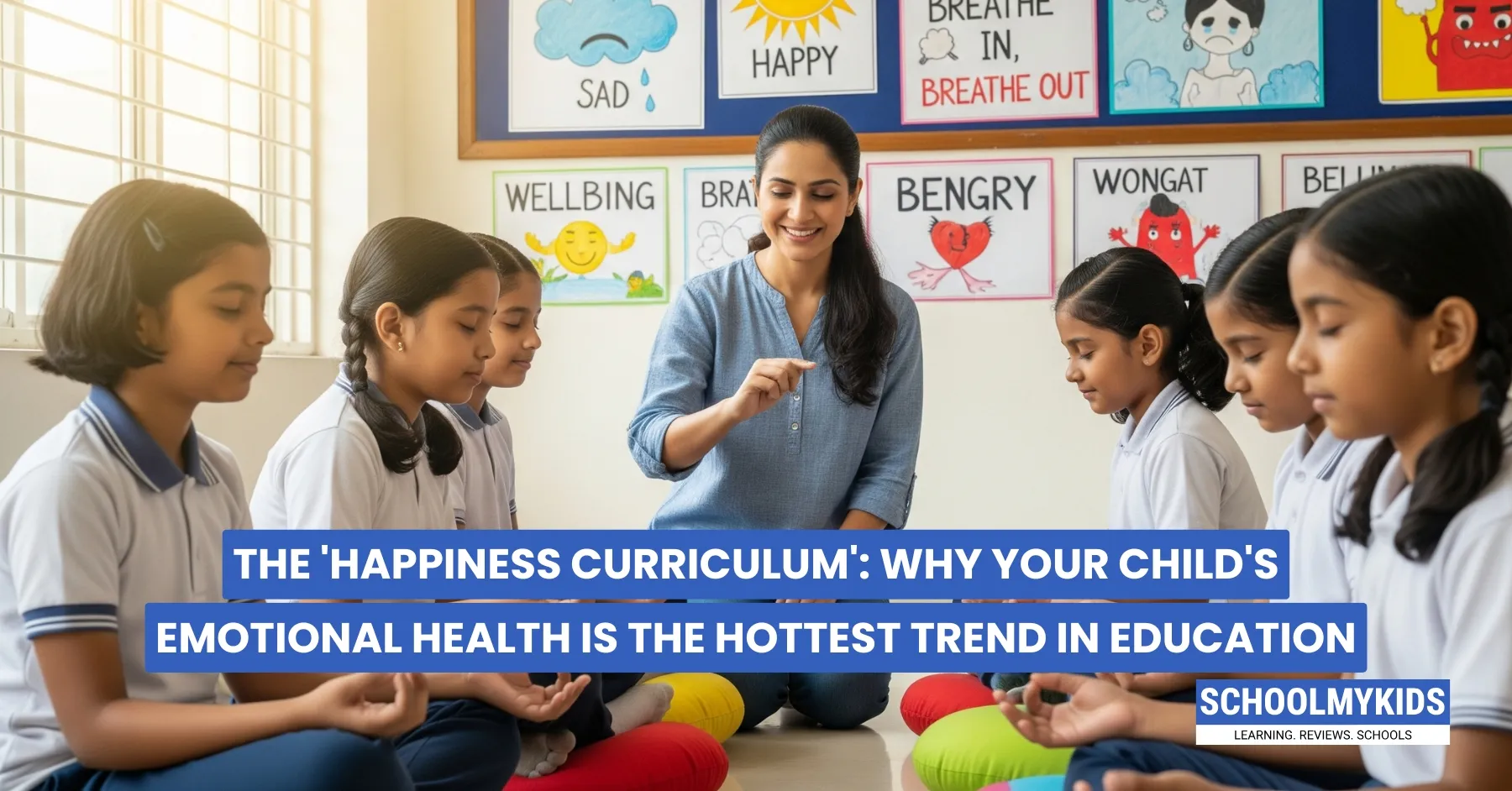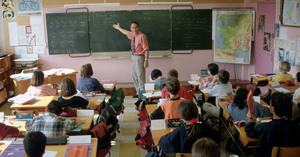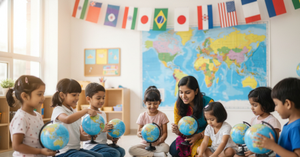Remember when we thought education was just about cramming facts and scoring high marks? Well, times are changing, and there's something beautiful happening in classrooms across Delhi that's making parents everywhere sit up and take notice.
What Exactly is This 'Happiness Curriculum'?
Picture this: your child walks into school and instead of going straight into math or science, they spend 40 minutes every day learning about ‘happiness’. Not the fake "just smile and pretend everything's fine" kind, but real, deep happiness that comes from understanding themselves and the world around them.
The Happiness Curriculum isn't some feel-good experiment. It's a serious educational program introduced in Delhi government schools in 2018, blessed by none other than the Dalai Lama himself. Today, it's touching the lives of 8 lakh students from nursery to grade 8, along with 21,000 teachers who practice it daily.
Think of it as giving your child emotional armor not to shut out the world, but to navigate it better.
Why is Everyone Talking About It?
Our kids are growing up in crazy times. Social media pressure, academic competition, uncertain futures, and let's not forget the pandemic that turned their world upside down. Traditional education was great at filling their heads with information, but what about their hearts?
This curriculum asks a simple but powerful question: What if we taught kids how to be happy and emotionally strong alongside their regular subjects?
The results speak for themselves. International media outlets like CNN and NPR have featured this program. Even royalty (the Dutch King and Queen) visited Delhi schools to see what the fuss was about. Harvard showcased it, and it won recognition at the World Economic Forum. When the world starts paying attention to something happening in Indian classrooms, you know it's special.
What Makes This Different from Regular Classes?
Unlike traditional subjects that focus on external knowledge, happiness classes turn the spotlight inward. Through age-appropriate stories, mindful activities, and reflective discussions, kids learn to:
- Understand their own emotions (instead of bottling them up)
- Think critically about situations (rather than just reacting)
- Build genuine relationships with family and friends
- Handle stress and conflict like pros
- Develop empathy and social awareness
- Express themselves creatively and confidently
The beauty lies in its simplicity. There are no heavy textbooks or stressful exams. Instead, children engage in meaningful conversations about their feelings, thoughts, and behaviors, and how these impact everyone around them.
The Three Pillars That Make It Work
The curriculum is built on what experts call the "Triad of Happiness", the three interconnected areas that create lasting joy:
- Understanding yourself: helping kids recognize their emotions and thoughts
- Building healthy relationships: teaching them to connect meaningfully with others
- Contributing to society: showing them how to make a positive difference
It's like teaching them to build happiness from the inside out, rather than constantly chasing it from external sources.
Why Your Child's Emotional Health is Academic Gold
Emotionally healthy kids perform better academically. When children understand their emotions, they can focus better, handle exam stress more effectively, and bounce back from failures faster.
Think about it, when your child is anxious or upset, can they really absorb what the math teacher is explaining? But a child who knows how to manage their emotions, who feels confident and connected, is naturally more receptive to learning.
The curriculum doesn't compete with academics; it enhances them. It's like upgrading your child's operating system to run all programs more efficiently.
Is This the Future of Education?
Absolutely. As artificial intelligence handles more routine tasks, the skills that will truly matter are emotional intelligence, creativity, empathy, and the ability to collaborate. The Happiness Curriculum is preparing children for this reality.
Conclusion
Even if your child's school doesn't have this curriculum yet, you can create similar experiences at home. Start conversations about emotions, practice mindfulness together, and prioritize your child's mental well-being alongside their grades.
The message is clear: in an age where information is everywhere, wisdom lies in understanding ourselves and connecting meaningfully with others. The Happiness Curriculum isn't just teaching children subjects; it's teaching them how to live.
And isn't that what education should really be about?








Be the first one to comment on this story.